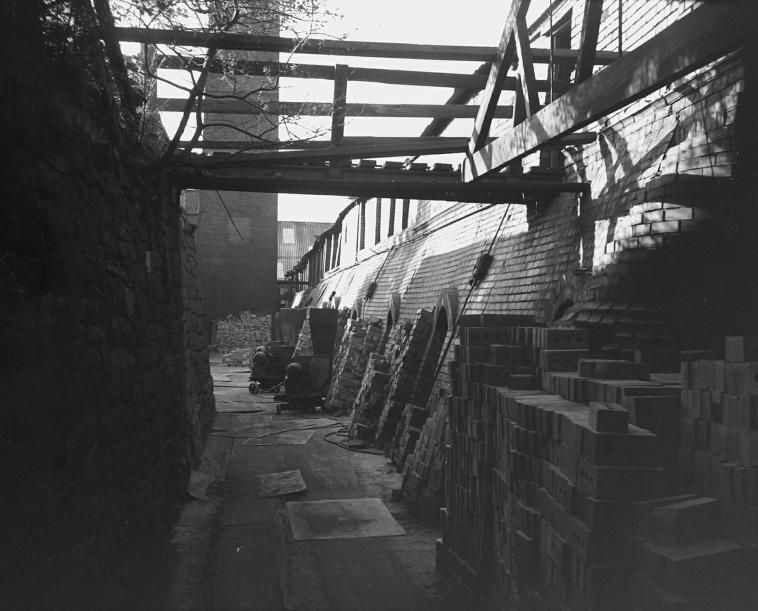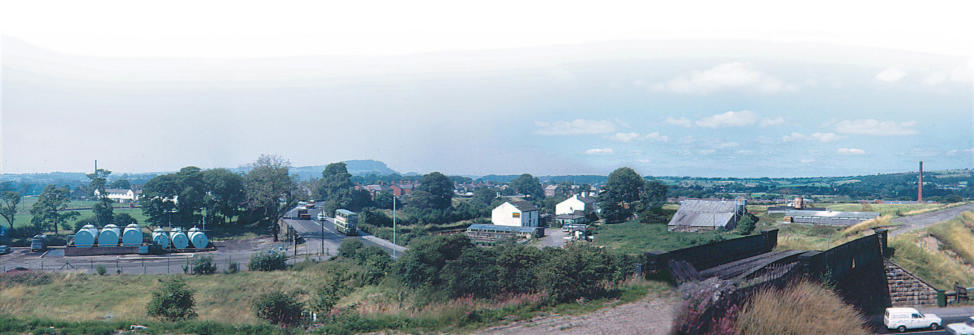

© www.white-coppice.co.uk 2022
Please read Feniscowles Station page also
Page 4 of 7




The Real Railway Children of Feniscowles
Page 4 of 7




We always listened to the radio, as we did not have a television. However, we did get a television eventually. This was in the form of a black
and white portable one, which we placed on a stool. The screen was approximately 4 inches wide by 3 inches deep and we would watch
full length films on this, all huddled around it. Another must-have trend that arrived was VHF because of the quality of sound.
However, the only radio station that could be picked up on VHF at that time was Radio Blackburn which had just started broadcasting.
If you listened now to what Radio Blackburn transmitted then, you would be in stitches. It seemed everything they said was repeated, twice
Another place we would frequent was situated a short walk up
Stockclough Lane – the Sand Quarry (or ‘Sand Quas’ as we
called it) operated by Thomas Williams (Euxton) Ltd and their
green lorries.
You could watch for hours, and be mesmorised by all the crane
and lorry movements, and the workings of the grading
machine, which would shake out all the pebbles and small
stones before leaving piles of pure, clean sand. This was then
loaded onto the green lorries, where they then proceeded onto
the weighbridge before leaving.
Above The eerie, strange landscape of Withnell Brickworks


or three times or more, together with
a continuous time check every five
minutes, but the sound was good!
One summer, we decided to have a
go at making sarsaparilla beer. You
could purchase all the relevant
ingredients from Walsh’s sarsaparilla
stall on Blackburn Market. The initial
brew that was produced tasted quite
good and so it was decided to make
a little bit more. That turned out well,
too. Now it was decided to make a
good quantity (a few gallons)
including giving it a longer time to
‘brew’. Then, one hot day we were all
sat at the table having our lunch
when there was a very loud ‘Bang!’
and the kitchenette bottom doors
flew open, one of which came off its
hinges.
What had happened was that one of
the containers of sarsaparilla had
exploded due to the fermentation
process in the heat. The temperature
of the brew should not have been
allowed to rise above 65 degrees F
(18 degrees C). We didn’t make any
more after that.
Directly opposite the station house,
facing the canal, was the Charrington
Hargreaves Fuel Company. This
consisted of six very large oil storage
wondered what would be inside this strange place. We did
know that flat lorries containing what seemed to be very
large packets of flour did arrive occasionally. So this
building became known to us as ‘Ranks Flour Mill’.
Weeks went by and still we did not have a clue what went
on in that building, until one day we suddenly had some
extra packets of biscuits in the house. These biscuits were
edible, were very plain, quite hard but tasted extremely
bland, rather like a digestive biscuit but not as sweet. We
called them ‘dog biscuits’ and they had come from ‘Ranks
Flour Mill’. It was not until years later that I found out what
the building really was – a government food storage
warehouse for use in the event of any disaster, natural or
otherwise. Charrington Hargreaves and the emergency
food storage facility has long since been demolished and is
now Kingsley Close.
Below Taken from an empty station house in 1974, showing
Charrington Hargeaves fuel depot, Broadhalgh’s Sheet
Metal works (with yellow sign) and Fred Reeds farm.
Eclipse Mill chimney can be seen on the right. The
trackbed is now slowly becoming overgrown but the
bridge has still to be dismantled.
tankers, a yard and an office. There were daily
comings and goings of the Ford tanker lorries that
would load up and despatch the oil to Blackburn and
the surrounding area. However, the problem came
occasionally at night when a tanker from Ellesmere
Port would arrive to fill up the main storage tanks. To
transfer the oil into the storage tanks, pumps would
start pumping very loudly and would go on, and on,
and on. Some nights it would not be too bad, but if
the wind was blowing in the wrong direction, it was
very annoying. Complaints were made, but to no
avail. It was one of those things you just had to put
up with. Next to the oil depot was a large, single
storey building, built of brick with an asbestos roof.
There were no windows in it and along the roof were
circular vents. As inquisitive boys, we all





























